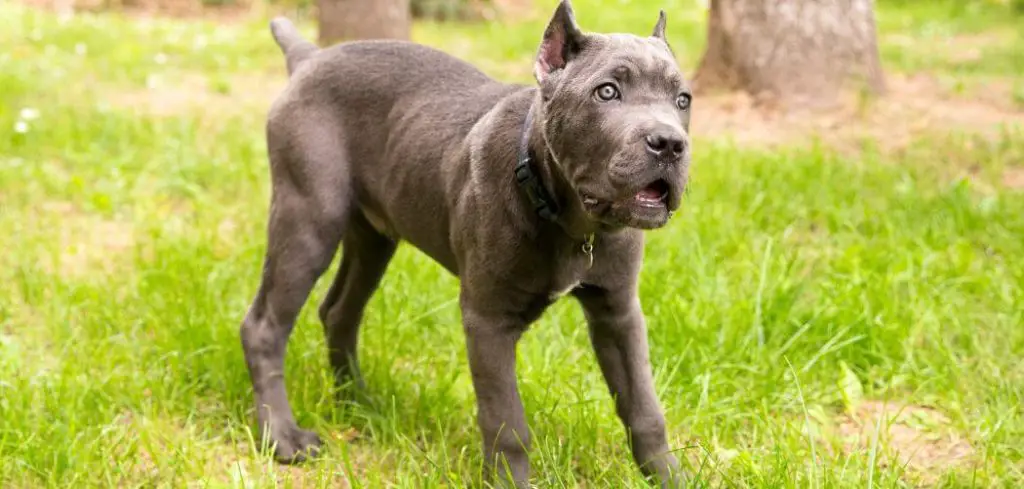It’s unsettling to see your dog panting heavily while frantically running around. This behavior can look like excitement, but when it’s intense or prolonged, it may be a sign of anxiety, pain, or even a medical condition that needs attention.
We outline the common causes of why your dog is panting and running around, what you can do at home, and when to seek veterinary help.
Table of Contents
Why Is My Dog Panting and Running Around — Why It Happens
Dogs pant and run around due to emotional triggers like excitement or stress, or physical discomfort such as pain, illness, or neurological disturbances. When these behaviors appear excessive or out of character, they often indicate something deeper than normal high energy.

Common Causes of Dog Panting and Running Around
Excitement or Overstimulation
A happy, overstimulated dog may zoom around the house and pant with joy.
This is especially common in young dogs or high-energy breeds after periods of rest or when they’re reunited with a favorite person.
Zoomies are typically brief and followed by rest.
However, if this hyperactivity is constant or paired with other symptoms, it’s worth looking deeper.
Anxiety or Panic Attacks
Dogs experiencing anxiety may pant excessively and pace or run in circles.
Triggers include separation from owners, thunderstorms, fireworks, or even unfamiliar visitors.
Unlike joyful zoomies, anxious running is often paired with whining, trembling, hiding, or destructive behavior.
Anxious episodes can last for minutes to hours and may occur frequently if not addressed.
Pain or Internal Discomfort
Pain can drive restless behavior, especially if your dog can’t find a comfortable position.
Dogs may run from room to room, panting, trying to escape the discomfort.
Abdominal pain (from bloating, gas, or internal issues), joint pain, or neurological irritation can trigger this behavior.
You might also see stretching, licking the abdomen, or yelping intermittently.
Read more: Dog Panting and Drinking Lots of Water (What it means)
Cognitive Dysfunction (Dog Dementia)
Older dogs with cognitive decline may show signs of restlessness and disorientation.
They may pant excessively, wander aimlessly, or run around without clear purpose.
Other signs include staring at walls, disrupted sleep cycles, and indoor accidents.
Veterinary assessment and medication can help improve comfort and behavior.
Neurological Issues or Seizure Activity
Some dogs experience partial seizures or neurological disturbances that cause pacing, running, or erratic movement paired with panting.
This may be followed by disorientation, salivation, or tremors.
If your dog suddenly acts frantic with no known trigger, a neurological exam may be necessary.
Seizure disorders often require lifelong management.
Hormonal Disorders (e.g., Cushing’s Disease)
Dogs with Cushing’s disease may pant continuously and seem hyperactive or restless.
Other symptoms include increased drinking, urination, a pot-bellied appearance, and hair loss.
While they may not run frantically like in panic, they often appear agitated and move around constantly.
Bloodwork and hormonal testing are needed for diagnosis.
What to Do If Your Dog Is Panting and Running Around
Stay calm and observe closely—your dog may feed off your stress or energy.
Check for environmental triggers: new noises, visitors, or recent disruptions to routine.
Remove or minimize the trigger if possible and guide your dog to a quiet space.
Avoid scolding. Instead, use a calm voice and offer a familiar toy, blanket, or crate.
Take note of how long the episode lasts, what preceded it, and whether it happens at certain times of day.
If it lasts longer than 10–15 minutes or seems abnormal for your dog, call your vet for guidance.
When to Call or Visit Your Vet
Seek veterinary help if your dog:
Pants excessively and won’t calm down
Runs in repetitive patterns or can’t be redirected
Shows signs of distress (trembling, drooling, vocalizing)
Collapses or appears disoriented afterward
Has a known condition like Cushing’s or epilepsy and symptoms worsen
Chronic episodes or sudden changes in behavior can signal underlying health concerns.
Read more: Dog Panting and Confused (When to worry)
Key Takeaway
Panting and running around might be excitement—or it could be a cry for help.
When this behavior becomes excessive or unusual, it’s time to look beyond energy levels and assess for pain, anxiety, or medical issues.
With a calm response and professional input, you can help your dog regain comfort and peace.
